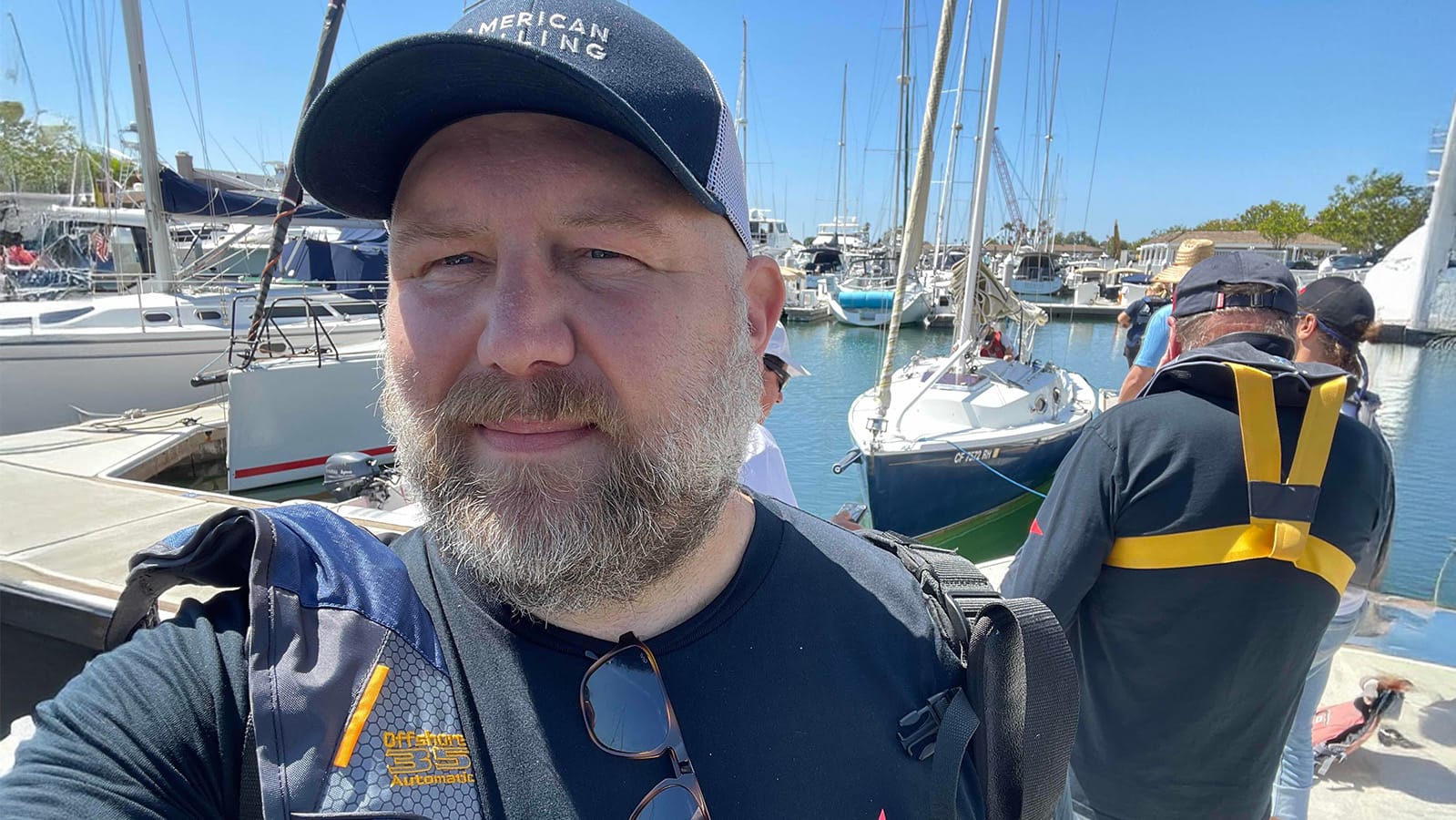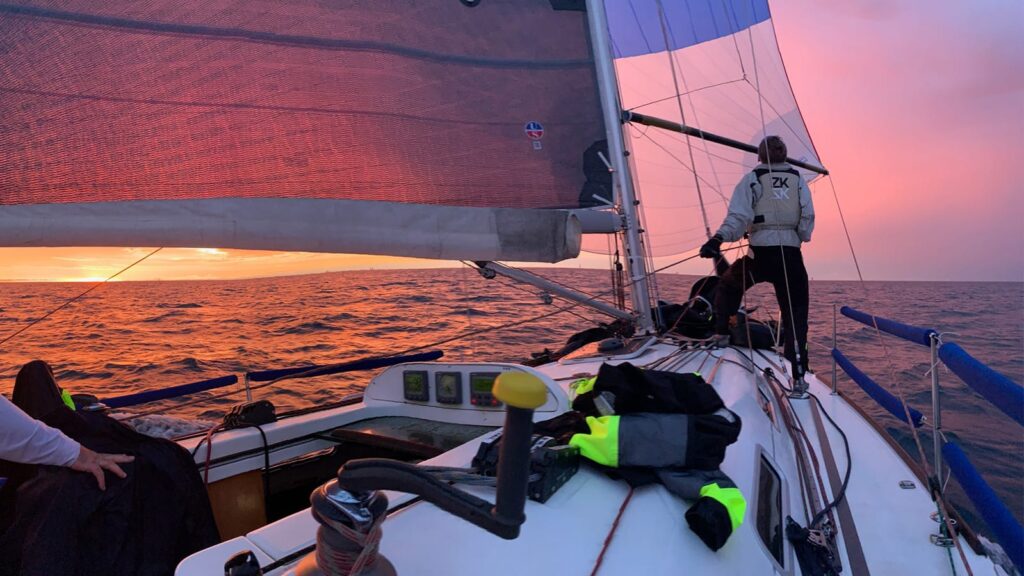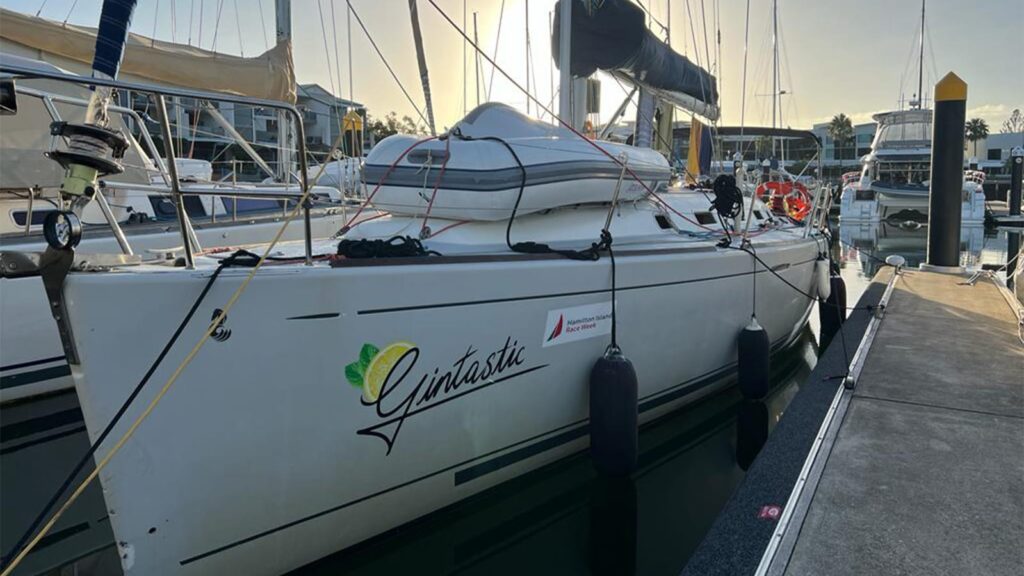By Jonathan Payne, CEO of American Sailing
Estimated reading time: 7 minutes
Table of contents
There’s an old saying passed down through seasoned skippers: You don’t really know sailing until something goes wrong. No matter how many hours you spend watching videos or reading manuals, nothing prepares you quite like the sudden slap of wind, the crunch of a bad tack, or when your rigging breaks in the middle of a daysail.
American Sailing is the largest sailing education organization in North America. We’ve certified more than half a million sailors over the last 40 years. We’ve seen every trend come and go: charts to chartplotters, teak to fiberglass, and yes, most recently, a movement to learn sailing entirely through screens.
Let me say up front, I’m not against technology. We offer online classes ourselves—some of them excellent, if I may say so. While certain sailing subjects are well-suited to online learning, like coastal navigation, marine weather, or how to troubleshoot a diesel engine, none of them involve actually driving the boat.
You can’t watch your way to being a competent sailor. You have to do it.
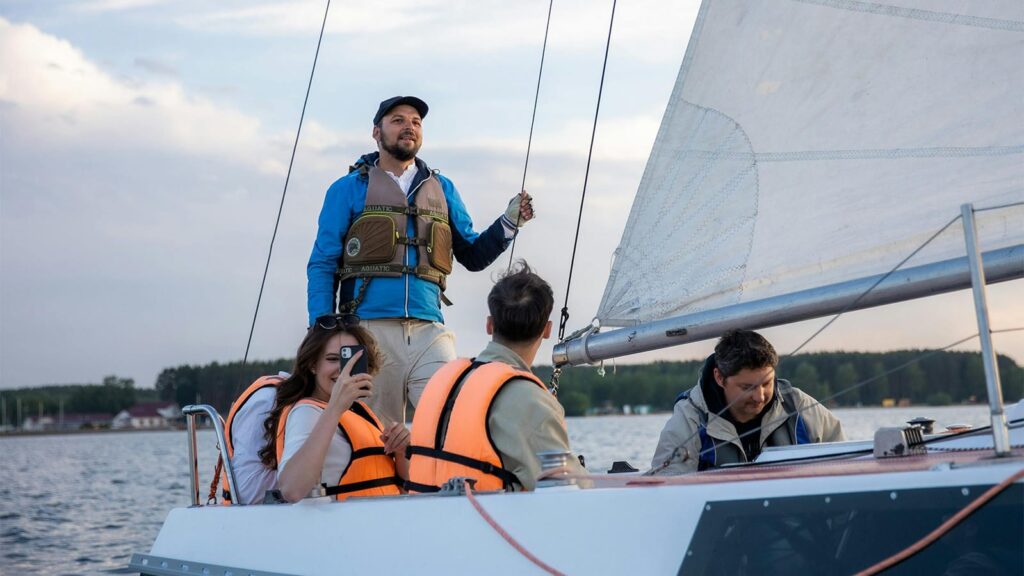
The Case for Kinetic Learning
Here’s what the science says: when we learn something physically—when we use our hands, shift our weight, adjust to dynamic changes—we encode the experience more deeply in our brains. It’s called “embodied cognition,” and it’s one of the reasons why you remember how to ride a bike even after 20 years, but can’t remember the periodic table you memorized in high school.
One study from the University of Chicago found that students who physically acted out scientific concepts retained the information far better than those who learned passively through videos or lectures. Researchers at Johns Hopkins confirmed it: combining physical movement with learning improves memory and problem-solving. The kicker? The more complex the motor task, the deeper the learning.
Well, sailing is nothing but complex motor tasks.
Trimming a sail isn’t just about pulling a rope. It’s about feeling when it’s right. It’s about watching the luff flutter, noticing the heel of the boat, adjusting your angle against the wind—all while staying aware of your crew, the current, the depth sounder, and that guy on a jet ski who doesn’t see you. You can’t simulate that in your living room.
And docking? Don’t get me started. Watching a video on docking is like watching a cooking show and expecting to nail a soufflé on your first try. Real docking involves wind, prop walk, nerves, fenders, and the occasional helpful (or not-so-helpful) dock neighbor with unsolicited advice.
Learning these skills takes muscle memory, reflexes, judgment. And you don’t get those from a screen—you get them from time on the water.
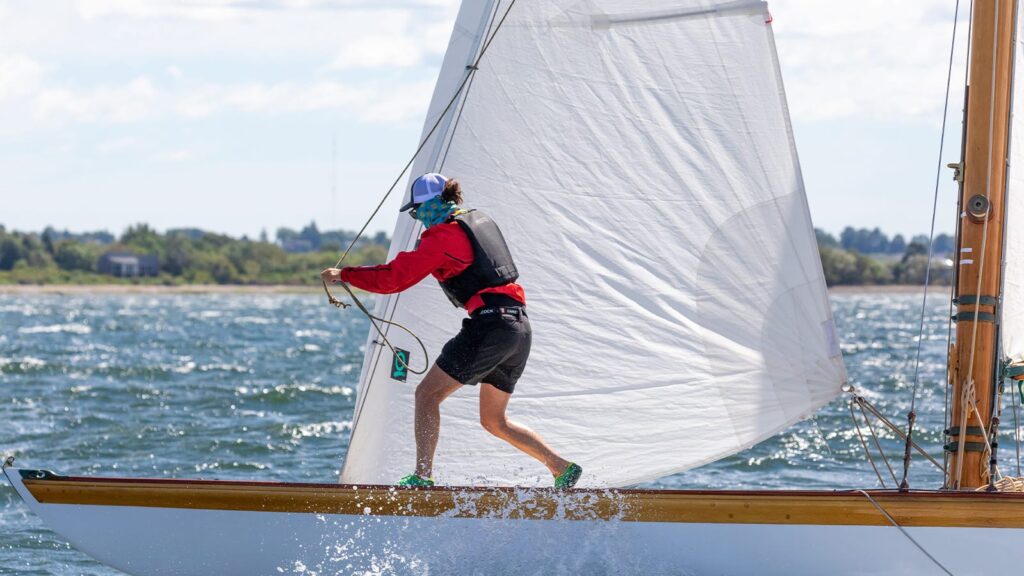
Sailing Is Not a Spectator Sport
One of the most dangerous assumptions you can make is that watching sailing is the same as doing it. It’s not.
In fact, it can be dangerously misleading. Online-only programs sometimes promote the idea that you can be “certified” to sail a boat based on multiple-choice questions and a few well-edited tutorial videos. But that’s like saying you’re certified to be a firefighter because you’ve watched Backdraft three times.
Imagine you’ve chartered a boat in Croatia. The sun is shining, your friends are onboard, and your whole vacation depends on your ability to get this boat off the dock. You turn the key. Nothing. You try again. Still nothing. The bow is pointing the wrong way, the crosswind is picking up, and that stone pier looks awfully close.
In that moment, would you rather have:
- a certificate you printed at home, or
- the calm voice of an instructor in your head, reminding you what to check, what to say, and how to get the boat off the dock without denting your pride—or the hull?
That’s the difference between screen knowledge and practical skill.
What Our Instructors Do That Videos Can’t
Now let me brag a bit.
Our instructors aren’t just skilled sailors; they’re masters of human patience, creativity, and teaching. They don’t just show you how to sail. They teach you how to think like a sailor.
They feel when you’re about to make a mistake and let you make just enough of it to learn. They watch your hands and body position and correct your form before you even realize something’s off. They know how to explain the same maneuver three different ways until the light bulb goes on. They’ll tell you stories from their own screw-ups so you feel less dumb about yours.
And most importantly, they teach judgment. When to reef. When to head in. When to wait. When to admit you’re in over your head. That kind of wisdom doesn’t come from a YouTube autoplay. It comes from one-on-one mentorship, earned experience, and yes, the occasional sunburn.
The Problem with Shortcut Culture
We live in a world that loves shortcuts. Get rich quick. Lose weight fast. Learn to sail in your pajamas.
But sailing resists shortcuts. That’s one of the reasons I love it. It’s humbling. It takes time. It teaches patience, persistence, and respect for the forces we can’t control. In a culture obsessed with convenience, sailing is one of the few things that still demands presence—physical, mental, and emotional.
There’s no pause button on a 25-knot gust. You can’t scrub backward when you miss the mark rounding. You can’t “re-watch” a docking maneuver.
You get one shot. That’s the point.
Learning in-person, on the water, isn’t just about competence. It’s about confidence. It’s about building instincts. And yes, it’s about earning the right to call yourself a sailor.
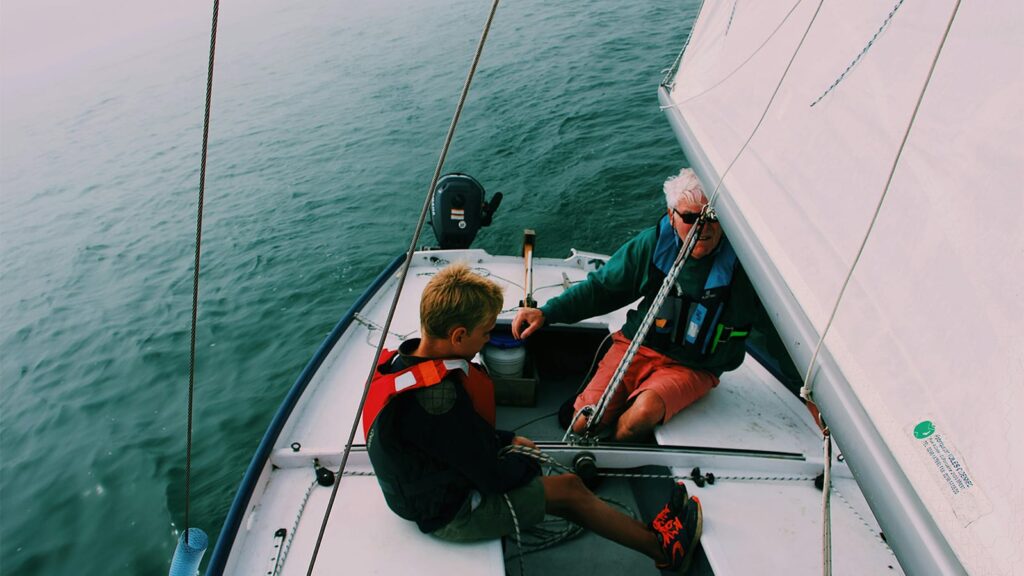
Our Responsibility as an Industry
As educators and stewards of the sailing lifestyle, we owe it to our students and to the oceans we cross to set the bar high. Not to lower it for convenience. Not to commodify it into PDFs and video libraries and hope for the best. But to invite people into a tradition that is best taught by putting hand to tiller and sail to wind.
At American Sailing, we are proud to partner with over 400 affiliated schools, each one run by passionate, knowledgeable sailors who care deeply about passing on their craft. They’re not in it for the clicks or the views. They’re in it for the aha moments on deck. The first time a student nails a tack. The first time they helm in heavy air without panic. The first time they anchor confidently for the night and sleep like a baby.
That’s what we’re about. And that’s what can never be digitized.
Final Thought
So if you’re dreaming of sailing and if the pull of the water is calling to you, don’t just watch. Come sail with us. Get your hands on the lines. Feel the boat move beneath your feet. Learn by doing.
The ocean doesn’t care how many videos you’ve watched. But it will reward every hour you’ve spent learning the hard way—with real wind, real water, and the kind of confidence that only comes from showing up and sailing.
We’ll see you out there.
Citations
Kontra, C., Lyons, D. J., Fischer, S. M., & Beilock, S. L. (2015). Physical experience enhances science learning.Psychological Science, 26(6), 737–749. https://doi.org/10.1177/0956797615569355
Herzfeld, D. J., Vaswani, P. A., Marko, M. K., & Shadmehr, R. (2014). A memory of errors in sensorimotor learning.Science, 345(6202), 1349–1353. https://doi.org/10.1126/science.1253138
About the Author
Jonathan Payne is the CEO of American Sailing. He still remembers the name of the instructor who taught him to heave-to, but he has no idea who narrated that sailing video he watched once on his phone.

Join The Discussion
-
Online vs. in person learning. What’s your stance?
Posted by Phaedra on July 24, 2025 at 11:30 amIn an age where so many skills can be learned online, what do you think makes sailing different? Have you ever had an experience where hands-on learning taught you something in a way that videos or reading never could? Share your story.
Phaedra replied 4 months, 3 weeks ago 1 Member · 0 Replies -
0 Replies
Sorry, there were no replies found.
Log in to reply.

